Outer Space & Universe
Outer Space & Universe
Space, also known as outer space, is the near-vacuum between celestial bodies. It is where everything (all of the planets, stars, galaxies and other objects) is found.
On Earth, space begins at the Kármán line (100 km above sea level). This is where Earth's atmosphere is said to stop and outer space begins. This is not a firm boundary but is a convention used by scientists and diplomats.
Items in space are free to move back and forth; up and down; and left and right. These three dimensions are what make 3D space. Items also move forward through time, which is sometimes called the fourth dimension.
The majority of space contains very little matter and so most of it is a vacuum. Scientists do not know how big space is but we do know that space is extremely big, and is always expanding.
According to the big bang theory, all matter and energy in the Universe was compressed into a very small space. Then it exploded and started expanding. Space is still growing in size today; this means the distance from one galaxy to distant galaxies is getting longer.
Gravity is the force that keeps the Moon in orbit around the Earth and the planets in orbit around the Sun. Gravity can stretch and bend space similar to how a heavy ball placed on a stretched sheet of rubber will cause the rubber to stretch. The scientist who discovered that space can bend is named Albert Einstein. How gravity bends space is part of his theory of general relativity.
Astronauts, Cosmonauts, Taikonauts and Spationauts
An astronaut is any person who is trained by NASA to travel and perform tasks in space. Although the space traveler may not necessarily be a United States citizen, each astronaut does go through a rigorous training regiment by the National Aeronautics and Space Administration. Other space travelers go by other names then astronaut depending on their country of origin.
In the United States, astronaut is derived from the Greek words ástron (star) and nautis (sailor). While, in Russia, a space traveler goes by the name космонавт (English: cosmonaut), which is derived from the Greek words kosmos (universe) and nautis (sailor). Westerners call a space traveler from China a taikonaut, based on the 1998 writings of Chiew Lee Yik and Chen Lan where the term tàikōng (great emptiness), Chinese for “space”. In China, the term yuháng yuán (universe navigator) is used for space traveler.
Only the United States of America (United States), Russia (earlier, the Union of Soviet Socialist Republics), and the People’s Republic of China (China) have sent manned spacecraft into space. Other countries have assisted these countries by sending their own space travelers on space missions. For instance, a French space traveler is called a spationaut (from the French word spationaute), which is derived from the Latin spatium (space) and Greek nautis (sailor). (plural in Greek nautes = sailors)
-
01:59
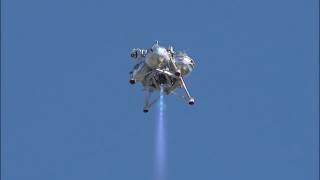
Morpheus Lander Flies Again on 'Green' Fuel | Video
Added 747 Views / 0 LikesNASA’s prototype planet-lander ascended to 800 ft and moved forward 1300 ft on Apr. 2, 2014. The vehicle is fueled by methane and oxygen. Project Morpheus has moved well past its 2012 crash landing (see it h
-
01:01

Hints of Dark Matter from Milky Way's Center Revealed by Gamma-Ray Map | Video
Added 830 Views / 0 LikesThe center of our galaxy was mapped by NASA's Fermi probe. Excess gamma rays are seen when sources of the radiation are removed from the view. No other known phenomena would produce this pattern and these results match very simple predictio
-
04:23

Ocean on Saturn Moon Enceladus Suspected Beneath Ice | Video
Added 861 Views / 0 LikesUsing data from a close fly-by of the moon by NASA Cassini probe, researchers have suggested that there is something dense beneath 18 to 24 miles of ice. Liquid water is the most likely suspect, Sapienza Università scientist Luciano Less explains.
-
01:05

Space Station Robot Fitted With Satellite Deployer | Animation
Added 819 Views / 0 LikesThe Space Station Integrated Kinetic Launcher for Orbital Payload Systems (SSIKLOPS) aka Cyclops, is a CubeSat carrier that can transfer from the Kibo module to station exterior robot'Dextre' for satellite deployment. The next SpaceX c
-
04:32

STS 123 Rewind - Dextre On-Orbit Assembly
Added 595 Views / 0 LikesSpacewalkers struggle to awaken the monstrous space station robot. Credit:NASA/Space.com
-
02:36

New Sentinel-1A Satellite's On-Orbit Separation - Crisp Video Footage
Added 670 Views / 0 LikesESA's Sentinel-1 was launched from Europe’s Spaceport in Kourou, French Guiana on April 3rd, 2014 (see it here) Cameras aboard the Soyuz Fregat upper stage captured its delivery into a Sun-synchronou
-
04:33
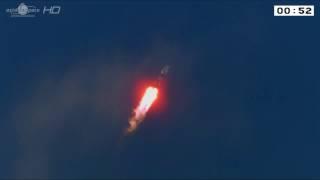
New Sentinel-1A Satellite Launches Aboard Soyuz Fregat | Video
Added 710 Views / 0 LikesESA's Sentinel-1 was launched from Europe’s Spaceport in Kourou, French Guiana on April 3rd, 2014 (superb footage of its on-orbit separation). The satellite will be able to scans Earths surface in all weather conditions, day or night.
-
03:29

Lyrid Meteor Shower, Mars and More - Where To Look In April 2014 | Video
Added 812 Views / 0 LikesThe meteor shower peaks on April 22nd and 23rd. Mars is at opposition this month and there will be a total lunar eclipse. (Skywatching Guide - Click Here)
-
01:11

Solar Flare Launches Super-Heated Plasma Into Space | Video
Added 740 Views / 0 LikesAn M6-class flare erupted from a sunspot on the Sun on April 2nd, 2014 and was observed by NASA's Solar Dynamics Observatory. The bright magnetic burst is seen in two wavelengths of extreme ultraviolet light: 304 Angstroms and 171 Angstroms.
-
03:51
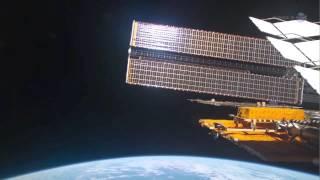
Twin Study in Space - One Up, One Down for Bio-Science | Video
Added 864 Views / 1 LikesNASA explains the biological experiments that will be performed on astronaut Scott Kelly during his year on Space Station and identical twin Mark (Space Shuttle Cdr. - Endeavour's Final Flight - See The
-
03:22

Lunar Eclipse Will Drain Moon Orbiter's Batteries | Video
Added 886 Views / 0 LikesThe Lunar Reconnaissance Orbiter (LRO) is solar powered and it will be in darkness for an extended period during lunar eclipses, when the moon passes into Earth’s shadow (LRO Snaps Apollo Landing Sites)
-
01:29

Strange 'Light' On Mars Snapped by Curiosity Rover | Video
Added 817 Views / 0 LikesThe Mars Science Laboratory photographed what appears to be a beam of light emanating from the surface of the Red Planet on April 3rd, 2014. NASA has yet to make an announcement on what it may be.
-
01:14

NASA Hackathon - Space Apps 2014 | Video
Added 668 Views / 0 LikesSpringing up at more than 100 locations, NASA's 2014 maker/hacker event attracts creative tech-heads from all walks of life. It's a party, a design-build session, and a community outreach to bring new original thinking to space challenges.
-
02:52

Diamond Ring in the Sky is a Beautiful Illusion | Video
Added 759 Views / 0 LikesShine bright like a diamond: A chance alignment of a blue planetary nebula, a vivid foreground star, and the ESO's Very Large Telescope in Chile produces an apparition like an engagement ring.
-
03:43
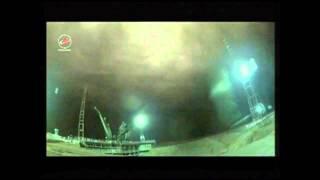
Blast-Off! Express Delivery To Space Station En-Route | Video
Added 780 Views / 0 LikesThe ISS Progress 55 resupply craft launched from the Baikonur Cosmodrome in Kazakhstan on April 9th, 2014. The 3 tons of food, fuel and gear on board will reach the Station in about 6 hours. Read more: http://goo.gl/jIMJG1
-
07:39
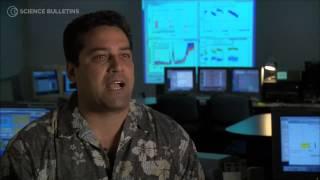
How To See Spacetime Stretch - LIGO | Video
Added 759 Views / 0 LikesWhen two stars collide or a massive star blows up the fabric of the universe warps and springs back, sending gravitational waves across the cosmos. The wave motion would be very tiny. But to watch it, scientists must build very large instruments.
-
02:35
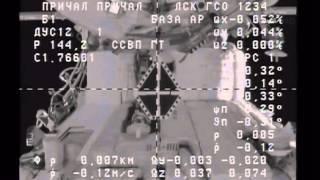
'Express Delivery' Cargo Ship Docks To Space Station | Video
Added 822 Views / 0 LikesThe ISS Progress 55 resupply craft launched from the Baikonur Cosmodrome in Kazakhstan on April 9th, 2014 and docked nearly 6 hours later. There are 3 tons of food, fuel and gear onboard. See the launch: http://goo.gl/DlSAEH
-
02:59

Mars Descent Parachute Rips In Rocket Sled Test | Video
Added 841 Views / 0 LikesA supersonic parachute was tested by NASA's Low-Density Supersonic Decelerator (LDSD) project. A rocket-fired sled and pulley system pulled a one kilometer rope with the parachute attached. - Curiosity's 7 Minutes of Terror: http://goo.gl/BAb8qa
-
01:18
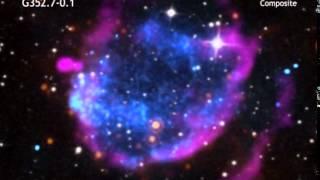
Supernova Shock Wave Blows-Away Huge Clumps of Cosmic Clutter | Video
Added 687 Views / 0 LikesA supernova remnant called G352.7-0.1 has swept away about 45X the Sun's mass worth of material during its expansion. Researchers believe that it interacted with a massive amount of dense material. -- X-Ray Universe Videos: http://goo.gl/zciTL
-
01:06
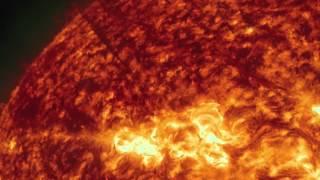
'Gushing' Hot Plasma Erupts From Sun | Video
Added 848 Views / 0 LikesA solar flare erupted from an active region on the Sun on April 4th, 2014. NASA's Solar Dynamics Observatory caught a close-up view of the turning and shifting plasma.
